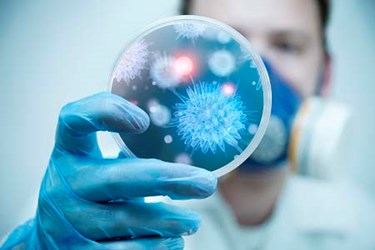Scientists ID Protein Target For E. coli Drugs

A new study published in the journal Science identifies a protein target called MurJ, necessary to the survival of E. coli bacteria, that could be a potential target for antibiotics development.
The researchers confirmed in the study that MurJ flips a fatty molecule from one side to the other of a bacterial cell membrane. Targeting MurJ will cause the molecule to be stationary and the cell will be unable to construct a layer needed to keep pressurized contents of the cell contained. If the cell is unable to contain its contents, it bursts.
Natividad Ruiz, co-lead author of the study and assistant professor of microbiology at The Ohio State University, said, “We have proof of principle that MurJ is actually a valid target because we showed that if we stop it from working, the cells will die within 10 minutes – very quickly. If you want to develop an antibiotic, it’s important to know a protein’s function. Defining the activity associated with MurJ is a big step forward toward possibly designing antibiotics that could target it.”
As member of the gram-negative family of bacteria, E. coli contains an extra membrane that slows down the drugs meant to penetrate it. Targeting MurJ however requires penetration of just one of the two membranes, increasing the chance of the drug to get past it and kill the bacteria cell.
Professor Ruiz first zeroed in on the potential role of MurJ protein as the elusive E. coli flippase while studying cell membranes in postdoctoral research. Together with Thomas Bernhardt, associate professor of microbiology and immunobiology at Harvard Medical School, Ruiz and Bernhardt performed the necessary steps to establish MurJ’s function as a flippase protein.
Professor Bernhardt’s lab proceeded to test a toxin known to ‘eat’ at the flipped lipid after it appears on the outside area of its inner membrane. Inhibiting MurJ in this way showed a buildup of lipid indicating that it never got flipped. Professor Ruiz said, “We showed these cells will die if we inhibit MurJ and we showed that MurJ is required for flipping to occur. If the cells are dying because the flipping doesn’t occur, then nobody else is doing that job.” She said that the action of inhibiting the protein is equivalent to an antibiotic shutting down the protein by stopping it from binding and surviving.
There have been several studies carried out to investigate the antibacterial resistance of E.coli bacteria. One study carried out in 2011 demonstrated that E.coli bacteria, upon being exposed to three different antibiotics, were more likely to build resistance against the low-level exposure to antibiotics as opposed to higher concentrations of antibiotic. However, there has also been a great deal of study on the dangers that antibiotics can bring to E.coli patients. A study carried out in 2012 by Washington University Medical Center in St. Louis determined that treating E.coli in children with an antibiotic increased the risk of the child developing hemolytic uremic syndrome (HUS), which can be life-threatening.
